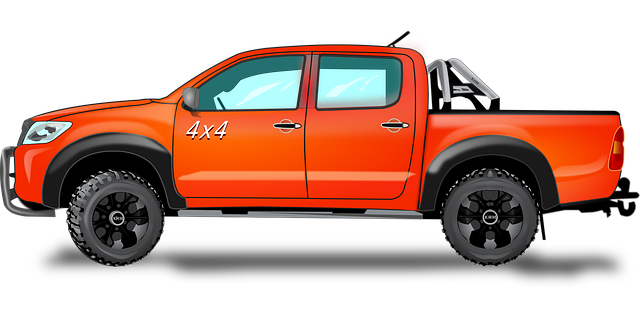ABS (Anti-lock Braking System) sensors in Pharr 4×4 vehicles are vital for safety and performance, preventing wheel lockup during hard braking. Regular calibration, replacement, and maintenance are essential to ensure optimal system efficiency. Common issues include sensor malfunction, contamination, and loose connections. This guide details the process of replacing ABS sensors, including tools, safety precautions, removal, installation, alignment, and post-installation testing, crucial for Pharr 4×4 repair and peak vehicle performance. Regular cleaning, visual inspections, and adherence to manufacturer recommendations further extend sensor life.
“ABS (Anti-lock Braking System) sensors are critical components in modern vehicles, especially in off-roaders like Pharr 4x4s. This article provides a comprehensive guide to understanding ABS sensors and their vital role in enhancing brake performance during 4×4 driving. We’ll explore common issues, offer troubleshooting tips, and present a step-by-step sensor replacement guide for those tackling Pharr 4×4 repairs. Additionally, discover maintenance tricks to ensure longevity and optimal performance of these essential safety features.”
- Understanding ABS Sensors: A Basic Overview
- The Role of ABS Sensors in Pharr 4×4 Vehicles
- Common Issues and Troubleshooting Tips
- Sensor Replacement: Step-by-Step Guide
- Maintenance and Longevity Tips for ABS Sensors
Understanding ABS Sensors: A Basic Overview

ABS sensors are a critical component in modern vehicles, particularly those with 4×4 capabilities in Pharr or beyond. These sensors play a vital role in enhancing safety and improving vehicle performance. In simple terms, ABS stands for Anti-lock Braking System, and its primary function is to prevent wheels from locking up during hard braking, allowing drivers to maintain control and steer effectively.
Each wheel on a vehicle equipped with ABS is fitted with a sensor that constantly monitors the rotation speed. When the system detects that a wheel is approaching or reaching the point of lockup, it promptly sends signals to the brake controller, which then modifies the pressure applied to that specific wheel, ensuring it remains turning instead of locking up. This technology is invaluable for off-road adventures in Pharr 4×4 repair scenarios, where unpredictable terrain can demand rapid and precise braking.
The Role of ABS Sensors in Pharr 4×4 Vehicles

ABS (Anti-lock Braking System) sensors play a crucial role in enhancing the safety and performance of Pharr 4×4 vehicles. These sensors are strategically placed near each wheel to monitor wheel speed, providing vital data to the vehicle’s computer system. In the event of sudden braking or when navigating challenging off-road terrains, ABS sensors help prevent wheel lockup by activating a series of controls that modulate brake pressure, ensuring optimal traction and driver control.
For Pharr 4×4 repair enthusiasts, understanding how ABS sensors function is essential for troubleshooting and maintenance. Regular sensor calibration and replacement are vital to ensure the system operates at peak efficiency. Properly maintained ABS sensors contribute significantly to the overall safety and capabilities of these robust 4×4 vehicles, making them reliable choices for off-road adventures and challenging Pharr terrain.
Common Issues and Troubleshooting Tips

ABS sensors, like any other component, can encounter issues that impact a vehicle’s safety and performance, especially in demanding conditions such as off-road adventures or rugged terrain, where a Pharr 4×4 repair might be necessary. Common problems include sensor malfunction, leading to incorrect signal transmission, which can result in ABS activation during non-critical situations or even complete system failure. Other issues involve sensor contamination with brake fluid or debris, causing inaccurate readings, or loose connections that disrupt communication between the sensors and the vehicle’s computer.
When troubleshooting, start by visually inspecting the sensors for any signs of damage or corrosion. Ensure proper ventilation in the wheel wells to prevent moisture buildup around the sensors. Check for clean connections using a voltage tester and consider replacing any worn-out or damaged sensor housing or wiring. For more complex problems, consult a professional mechanic, especially when dealing with advanced ABS systems, as misdiagnosis can lead to unsafe driving conditions. Effective troubleshooting is key to maintaining optimal vehicle performance and safety during Pharr 4×4 repairs.
Sensor Replacement: Step-by-Step Guide

Sensor Replacement: Step-by-Step Guide for Pharr 4×4 Repair
When it comes to ABS sensor replacement in a Pharr 4×4, understanding the process is key to ensuring your vehicle’s safety and performance. Begin by locating the ABS sensors, which are typically found near the wheels or suspension components. These sensors monitor wheel speed and send critical data to the ABS module. Next, gather the necessary tools: a socket wrench compatible with your vehicle, new ABS sensors (ensure they’re compatible with your Pharr 4×4 model), and protective gear. Safety is paramount during this repair.
Dismantling starts by removing the wheel and any associated parts that cover the sensor. Use the socket wrench to carefully loosen and remove the old sensor, taking note of its orientation for easy reinstallation. Clean the mounting area thoroughly to ensure a secure bond with the new sensor. Install the new ABS sensor, ensuring it’s aligned correctly. Double-check connections before securing them with the wrench. Test the replacement by starting your Pharr 4×4 and checking the ABS system for proper function during a test drive.
Maintenance and Longevity Tips for ABS Sensors

ABS sensors, like any other critical automotive component, require regular maintenance to ensure optimal performance and longevity. A consistent cleaning routine, including the removal of brake dust and debris, can significantly prolong the life of ABS sensors. This can be achieved through regular washing and inspection, especially in areas prone to mud, dirt, or salt buildup. Additionally, monitoring the sensor for any visible damage or corrosion is essential.
For a Pharr 4×4 repair involving ABS sensors, it’s crucial to adhere to manufacturer guidelines for maintenance intervals. Regular checks during routine services can catch potential issues early on. Moreover, using high-quality replacement parts and following proper installation procedures recommended by the manufacturer are vital steps in ensuring the continued reliability of ABS sensors, thereby enhancing overall vehicle safety.
ABS sensors are vital components in modern vehicles, especially Pharr 4x4s, offering enhanced safety and control. Regular maintenance and prompt troubleshooting of any issues can ensure these sensors function optimally. By following the comprehensive guide on sensor replacement and implementing maintenance tips, Pharr 4×4 owners can keep their vehicles running smoothly, preventing costly repairs and ensuring a safer driving experience. Understanding and caring for ABS sensors is an essential part of responsible Pharr 4×4 repair.



